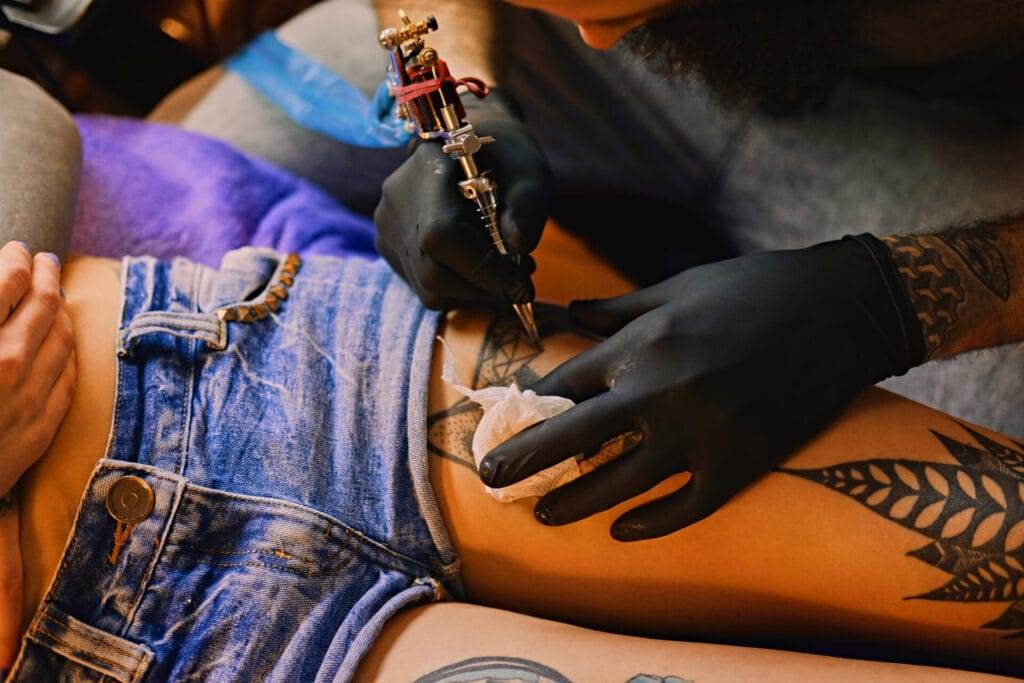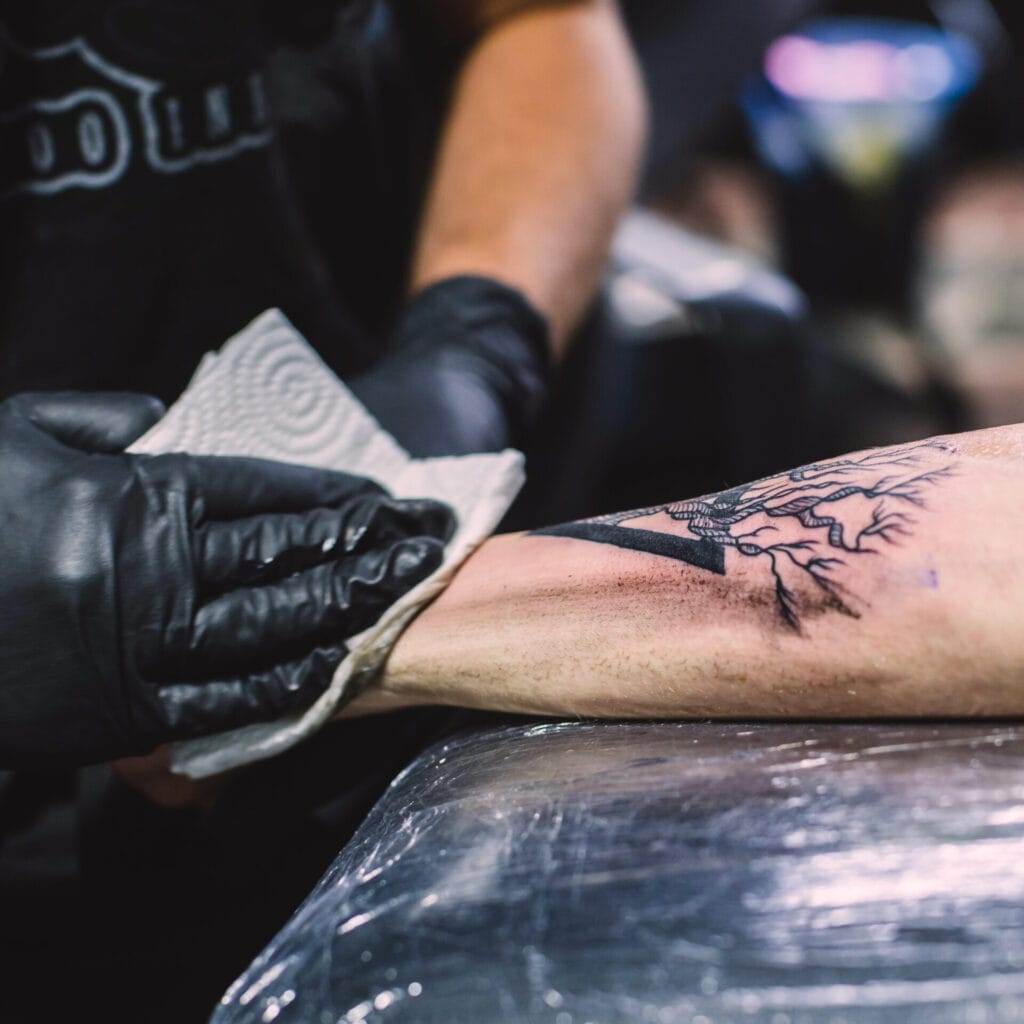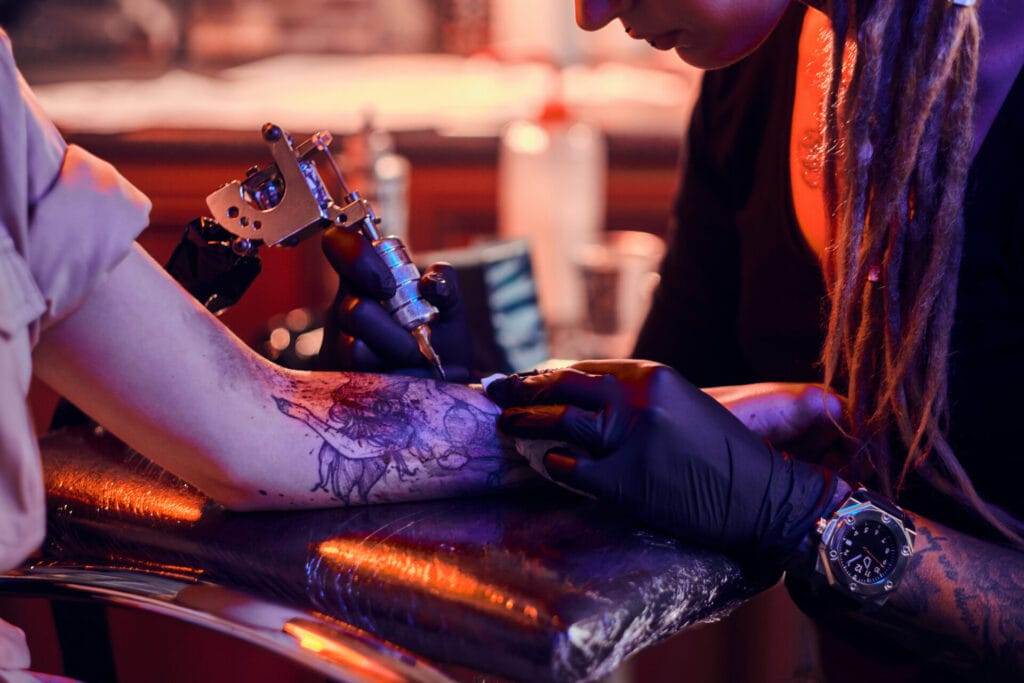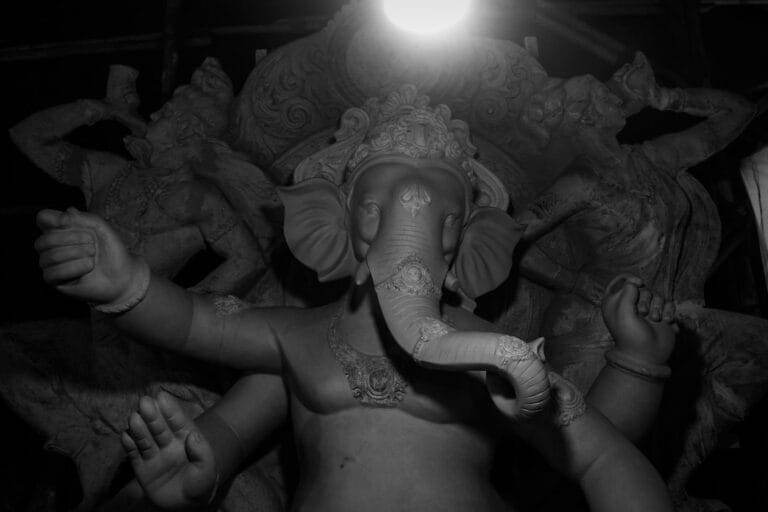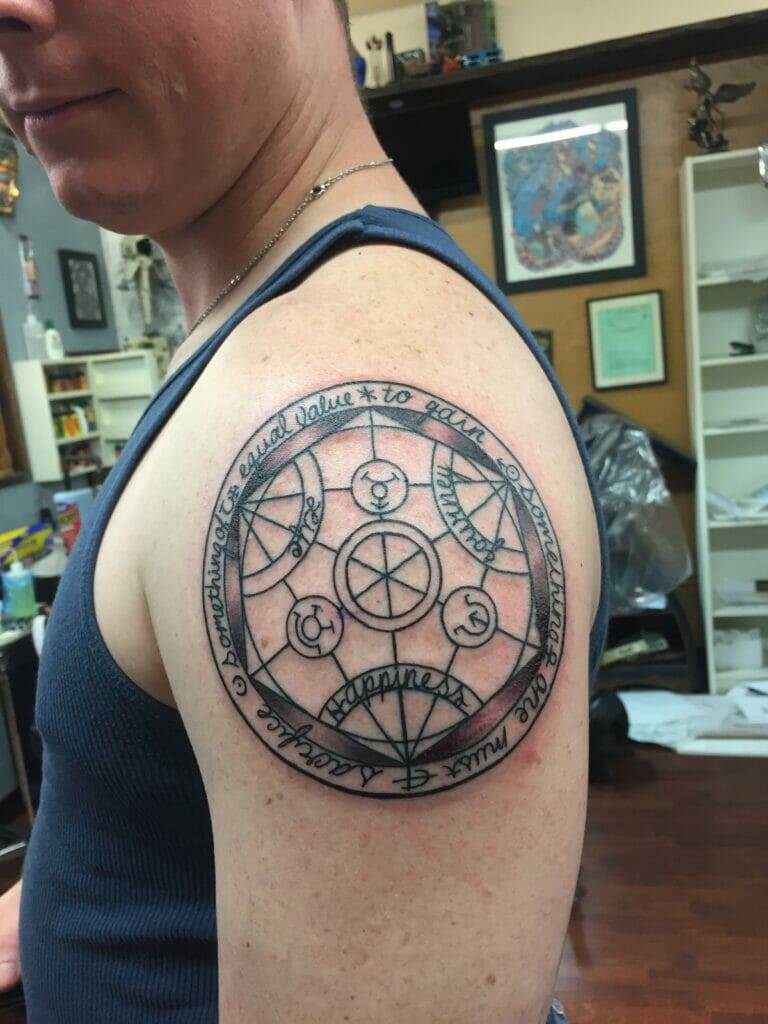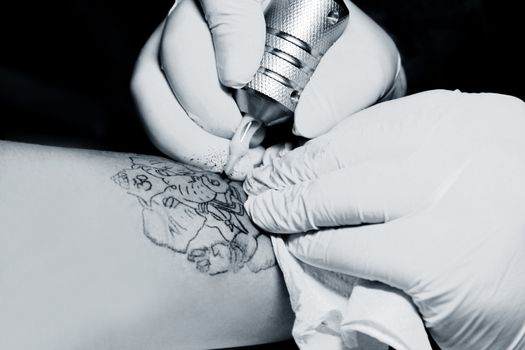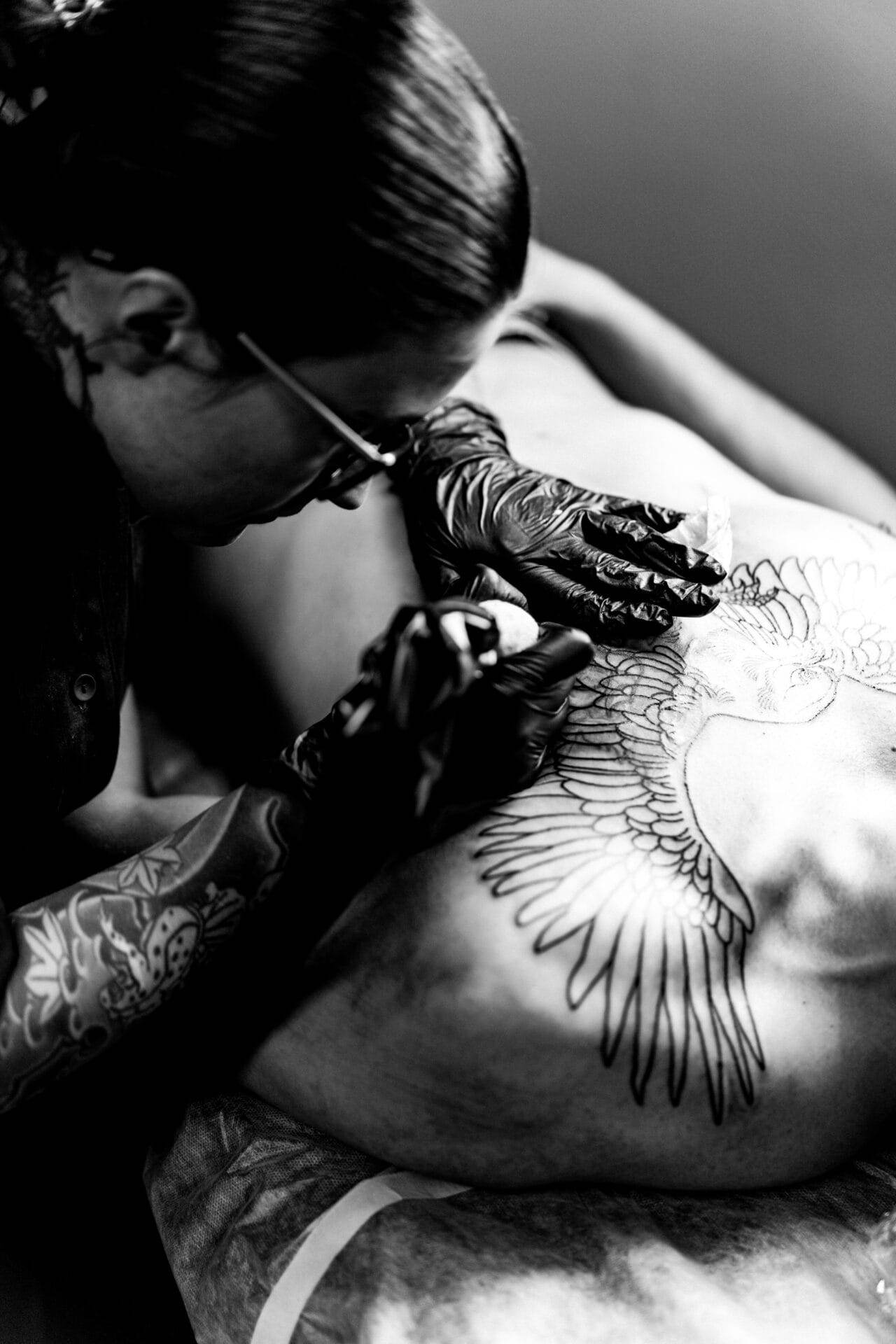
Tattooing has long been a form of artistic expression, a canvas for individuals to showcase their unique stories, beliefs, and personal aesthetics. Over the years, the evolution of tattooing techniques has led to the emergence of two distinct approaches: machine-driven and hand-poked. As the art of tattooing continues to captivate and inspire, the choice between these two techniques has become a topic of growing interest among both tattoo enthusiasts and artists alike.
At the heart of this discussion lies the fundamental differences between machine and hand-poked tattooing. Machine-driven tattoos, with their precision and efficiency, have become the predominant method in modern times, while the traditional hand-poked approach has maintained its allure for those seeking a more personalized and organic aesthetic. Each technique offers its own unique set of advantages and challenges, making the decision of which to choose a deeply personal one.
Understanding the machine tattoo technique
The tattoo machine, a technological marvel, has revolutionized the art of tattooing. This intricate device, powered by an electric motor, utilizes a series of needles to precisely deposit ink into the skin, creating intricate designs with remarkable speed and consistency. The machine’s ability to control the depth and density of the ink application has made it a favored choice among many tattoo artists, as it allows for a level of precision and detail that was once unattainable.
The efficiency and precision of machine-driven tattoos have made them a popular choice for those seeking a clean, polished, and consistent look. The machine’s ability to deliver consistent line work, shading, and color application has made it a go-to option for larger, more complex designs. Additionally, the speed at which machine tattoos can be executed has made them a practical choice for those with limited time or a desire for a quicker tattooing experience.
Exploring the Hand-Poked Tattoo Approach
In contrast to the machine-driven approach, the traditional hand-poked tattoo technique has maintained a devoted following among both artists and enthusiasts. This method, which dates back centuries, involves the manual application of ink using a single needle or a series of needles, meticulously applied by the artist’s skilled hand. The hand-poked technique requires a slower, more deliberate approach, allowing the artist to create unique and organic-looking designs that often have a distinct, handcrafted aesthetic.
The hand-poked tattoo technique is prized for its personalized and intimate nature. Each stroke of the needle is a direct extension of the artist’s hand, imbuing the tattoo with a level of individuality and character that can be difficult to replicate with a machine. The slower pace of the hand-poked process also allows for a more thoughtful and collaborative experience between the artist and the client, as they work together to bring the desired design to life.
Pros and Cons of Machine Tattoos
The advantages of machine-driven tattoos are numerous and well-documented. The speed and precision of the machine allow for the creation of intricate, detailed designs with a high level of consistency. This efficiency can be particularly beneficial for larger tattoos or those with complex shading and color work. Additionally, the machine’s ability to deliver a uniform application of ink can result in a polished, professional-looking finish.
However, the very qualities that make machine tattoos appealing can also be seen as potential drawbacks. The speed and consistency of the machine can sometimes lead to a sense of over-saturation or a lack of organic feel, as the designs may appear too perfect or uniform. This can be a concern for those seeking a more personalized or unique tattoo experience.
Advantages of Hand-Poked Tattoos
The hand-poked tattoo technique offers a unique set of advantages that appeal to many tattoo enthusiasts. The personalized and intimate nature of this approach allows for a deeper connection between the artist and the client, as the tattoo is literally crafted by the artist’s hand. This personal touch can imbue the tattoo with a sense of individuality and character that is often difficult to replicate with a machine.
Furthermore, the organic and handcrafted appearance of hand-poked tattoos can be highly appealing to those seeking a more natural, artistic aesthetic. The subtle variations in line work and shading that can occur during the hand-poked process can lend a one-of-a-kind quality to the finished tattoo, making each piece a true work of art.
Factors to Consider When Choosing a Tattoo Technique
When it comes to choosing between machine and hand-poked tattoos, there is no one-size-fits-all answer. The decision ultimately comes down to personal preference and the desired aesthetic. Those seeking a clean, polished, and efficient tattoo experience may gravitate towards the machine-driven approach, while those drawn to a more personalized and organic look may find the hand-poked technique more appealing.
It is important to consider factors such as the level of detail and complexity in the desired design, as well as the artist’s expertise and experience in both techniques. Consulting with the skilled tattoo artists at Redemption Ink can help guide you in making an informed decision that aligns with your personal vision and artistic preferences.
The Funhouse Redemption Ink Experience
At Redemption Ink, the talented team of tattoo artists is well-versed in both machine and hand-poked techniques, allowing clients to explore the unique qualities of each approach. The studio’s welcoming and comfortable environment fosters a collaborative experience, where clients can work closely with the artists to bring their tattoo dreams to life.
Whether you’re drawn to the precision and efficiency of machine-driven tattoos or the personalized and organic feel of hand-poked designs, the Redemption Ink team is dedicated to guiding you through the process and ensuring that you leave with a tattoo that truly reflects your individual style and artistic vision.
Aftercare and Healing for Machine and Hand-Poked Tattoos
Proper aftercare is essential for the healing and longevity of both machine and hand-poked tattoos. While the two techniques share some common aftercare guidelines, such as keeping the tattoo clean and moisturized, there are also some unique considerations for each approach.
Machine tattoos, with their more aggressive application, may require a slightly more intensive aftercare regimen to ensure proper healing and prevent complications. Hand-poked tattoos, on the other hand, often heal more gently and may require a more delicate approach to aftercare, as the skin has been less traumatized during the tattooing process.
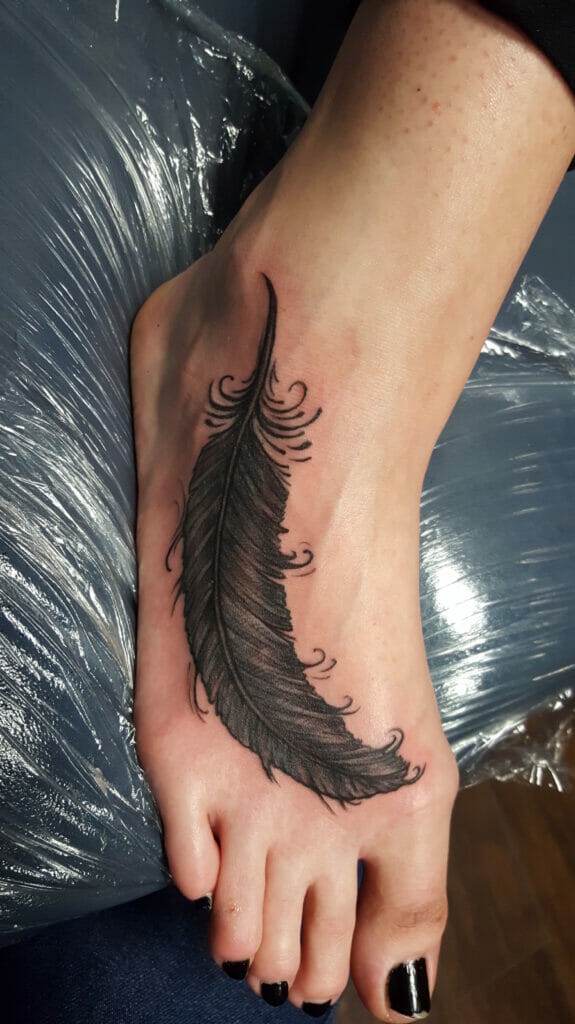
Deciding on the Right Tattoo Technique for You
Ultimately, the choice between machine and hand-poked tattoos is a deeply personal one, reflecting your individual preferences, artistic vision, and the desired aesthetic. By considering the unique qualities and advantages of each technique, as well as consulting with the experienced team at Redemption Ink, you can make an informed decision that aligns with your tattoo goals and ensures a truly remarkable and meaningful experience.
Whether you’re drawn to the precision and efficiency of machine-driven tattoos or the personalized and organic feel of hand-poked designs, the Redemption Ink team is here to guide you through the process and help you create a tattoo that you’ll cherish for years to come.
FAQs
What is the difference between machine and hand-poked tattoo techniques?
The machine tattoo technique involves the use of a tattoo gun that rapidly punctures the skin with needles to inject ink, while the hand-poked technique uses a single needle attached to a stick to manually puncture the skin and insert ink.
Which technique is faster, machine or hand-poked?
The machine tattoo technique is generally faster than the hand-poked technique, as the tattoo gun can quickly and efficiently inject ink into the skin.
Which technique is more painful, machine or hand-poked?
The level of pain experienced during a tattoo can vary from person to person, but many people find that hand-poked tattoos are less painful than machine tattoos, as the hand-poked technique involves a slower and more gentle process.
Are there any differences in the healing process between machine and hand-poked tattoos?
Both machine and hand-poked tattoos require proper aftercare for healing, but some people find that hand-poked tattoos heal faster and with less scabbing compared to machine tattoos.
Can any tattoo design be done using both machine and hand-poked techniques?
Most tattoo designs can be done using either machine or hand-poked techniques, but some intricate and detailed designs may be better suited for machine tattoos due to the precision and speed of the tattoo gun.
How do I choose between machine and hand-poked techniques for my tattoo?
When choosing between machine and hand-poked techniques for your tattoo, consider factors such as the design complexity, pain tolerance, and desired healing process. It’s also important to consult with a professional tattoo artist to discuss which technique would be best for your specific tattoo idea.

